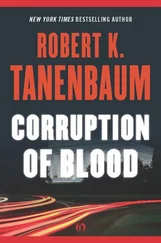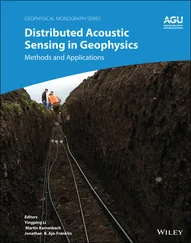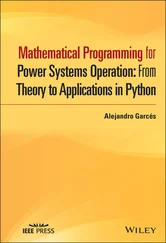Fig. 1-10.Different clients may mount the servers in different places.
The operating system that is used in this kind of environment must manage the individual workstations and file servers and take care of the communication between them. It is possible that the machines all run the same operating system, but this is not required. If the clients and servers run on different systems, as a bare minimum they must agree on the format and meaning of all the messages that they may potentially exchange. In a situation like this, where each machine has a high degree of autonomy and there are few system-wide requirements, people usually speak of a network operating system.
1.4.2. True Distributed Systems
Network operating systems are loosely-coupled software on loosely-coupled hardware. Other than the shared file system, it is quite apparent to the users that such a system consists of numerous computers. Each can run its own operating system and do whatever its owner wants. There is essentially no coordination at all, except for the rule that client-server traffic must obey the system's protocols.
The next evolutionary step beyond this is tightly-coupled software on the same loosely-coupled (i.e., multicomputer) hardware. The goal of such a system is to create the illusion in the minds of the users that the entire network of computers is a single timesharing system, rather than a collection of distinct machines. Some authors refer to this property as the single-system image.Others put it slightly differently, saying that a distributed system is one that runs on a collection of networked machines but acts like a virtual uniprocessor.No matter how it is expressed, the essential idea is that the users should not have to be aware of the existence of multiple CPUs in the system. No current system fulfills this requirement entirely, but a number of candidates are on the horizon. These will be discussed later in the book.
What are some characteristics of a distributed system? To start with, there must be a single, global interprocess communication mechanism so that any process can talk to any other process. It will not do to have different mechanisms on different machines or different mechanisms for local communication and remote communication. There must also be a global protection scheme. Mixing access control lists, the UNIX® protection bits, and capabilities will not give a single system image.
Process management must also be the same everywhere. How processes are created, destroyed, started, and stopped must not vary from machine to machine. In short, the idea behind network operating systems, namely that any machine can do whatever it wants to as long as it obeys the standard protocols when engaging in client-server communication, is not enough. Not only must there be a single set of system calls available on all machines, but these calls must be designed so that they make sense in a distributed environment.
The file system must look the same everywhere, too. Having file names restricted to 11 characters in some locations and being unrestricted in others is undesirable. Also, every file should be visible at every location, subject to protection and security constraints, of course.
As a logical consequence of having the same system call interface everywhere, it is normal that identical kernels run on all the CPUs in the system. Doing so makes it easier to coordinate activities that must be global. For example, when a process has to be started up, all the kernels have to cooperate in finding the best place to execute it. In addition, a global file system is needed.
Nevertheless, each kernel can have considerable control over its own local resources. For example, since there is no shared memory, it is logical to allow each kernel to manage its own memory. For example, if swapping or paging is used, the kernel on each CPU is the logical place to determine what to swap or page. There is no reason to centralize this authority. Similarly, if multiple processes are running on some CPU, it makes sense to do the scheduling right there, too.
A considerable body of knowledge is now available about designing and implementing distributed operating systems. Rather than going into these issues here, we will first finish off our survey of the different combinations of hardware and software, and come back to them in Sec. 1.5.
1.4.3. Multiprocessor Timesharing Systems
The last combination we wish to discuss is tightly-coupled software on tightly-coupled hardware. While various special-purpose machines exist in this category (such as dedicated data base machines), the most common general-purpose examples are multiprocessors that are operated as a UNIX timesharing system, but with multiple CPUs instead of one CPU. To the outside world, a multiprocessor with 32 30-MIPS CPUs acts very much like a single 960-MIPS CPU (this is the single-system image discussed above). Except that implementing it on a multiprocessor makes life much easier, since the entire design can be centralized.
The key characteristic of this class of system is the existence of a single run queue: a list of all the processes in the system that are logically unblocked and ready to run. The run queue is a data structure kept in the shared memory. As an example, consider the system of Fig. 1-11, which has three CPUs and five processes that are ready to run. All five processes are located in the shared memory, and three of them are currently executing: process A on CPU 1, process В on CPU 2, and process С on CPU 3. The other two processes, D and E, are also in memory, waiting their turn.
Fig. 1-11.A multiprocessor with a single run queue.
Now suppose that process В blocks waiting for I/O or its quantum runs out. Either way, CPU 2 must suspend it, and find another process to run. CPU 2 will normally begin executing operating system code (located in the shared memory). After having saved all of B's registers, it will enter a critical region to run the scheduler to look for another process to run. It is essential that the scheduler be run as a critical region to prevent two CPUs from choosing the same process to run next. The necessary mutual exclusion can be achieved by using monitors, semaphores, or any other standard construction used in singleprocessor systems.
Once CPU 2 has gained exclusive access to the run queue, it can remove the first entry, D, exit from the critical region, and begin executing D. Initially, execution will be slow, since CPU 2's cache is full of words belonging to that part of the shared memory containing process B, but after a little while, these will have been purged and the cache will be full of D's code and data, so execution will speed up.
Because none of the CPUs have local memory and all programs are stored in the global shared memory, it does not matter on which CPU a process runs. If a long-running process is scheduled many times before it completes, on the average, it will spend about the same amount of time running on each CPU. The only factor that has any effect at all on CPU choice is the slight gain in performance when a process starts up on a CPU that is currently caching part of its address space. In other words, if all CPUs are idle, waiting for I/O, and one process becomes ready, it is slightly preferable to allocate it to the CPU it was last using, assuming that no other process has used that CPU since (Vaswani and Zahorjan, 1991).
As an aside, if a process blocks for I/O on a multiprocessor, the operating system has the choice of suspending it or just letting it do busy waiting. If most I/O is completed in less time than it takes to do a process switch, busy waiting is preferable. Some systems let the process keep its processor for a few milliseconds, in the hope that the I/O will complete soon, but if that does not occur before the timer runs out, a process switch is made (Karlin et al., 1991). If most critical regions are short, this approach can avoid many expensive process switches.
Читать дальше












